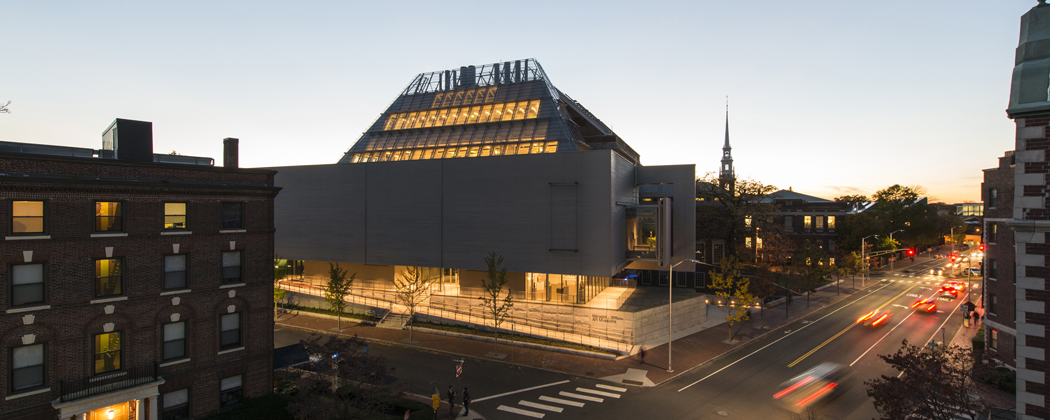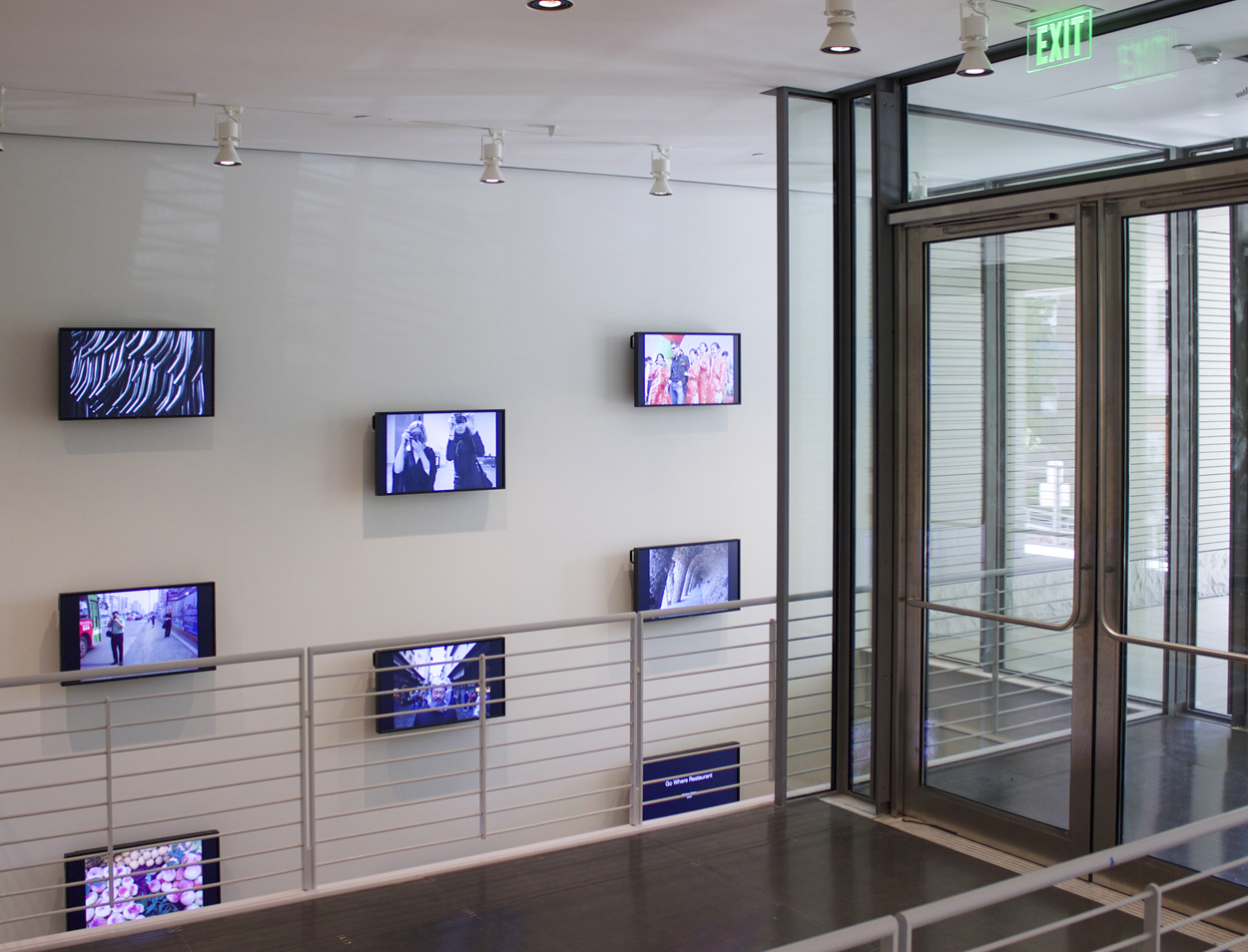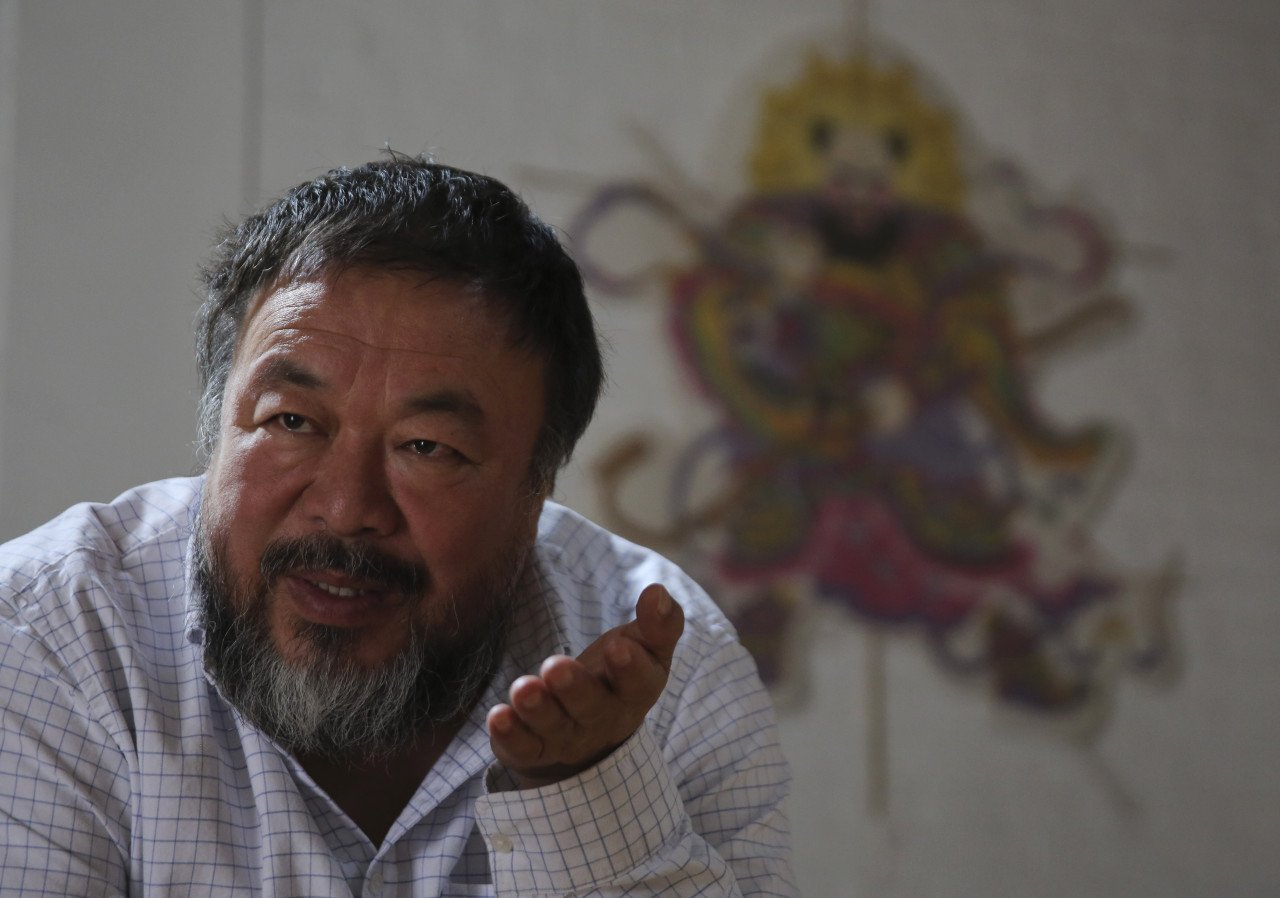Advertisement
7,000 Photos By Chinese Dissident Ai Weiwei Help Open The Harvard Art Museums

Part 3 of 3 on the Harvard Art Museums' reopening
The staff at the Harvard Art Museums unveils its new building Sunday with a free open house celebration. Italian architect Renzo Piano designed the academic institution’s galleries, laboratories and atrium to be more inviting to general public. When people walk through the Prescott Street entrance, they will be confronted with a work by the famous Chinese dissident artist Ai Weiwei.
Push through the new glass doors at the Harvard Art Museums, walk half-way across a small bridge, look to your right and you'll see a display of more than 7,000 photographs rotating, in shuffle-mode, on 12 television monitors.

"Each image on each screen changes every four seconds," Chief Curator Deborah Kao explained, "so it’s a very dynamic piece."
Kao is also curator of photographs and said these images were shot by Ai Weiwei and his friends beginning in 2003.
"We were looking for an artist who had a kind of global importance and was trying to dig deeply into images about art, but also about culture and politics at the moment to really signal a kind of new ambition for contemporary art," she said.
Ai Weiwei's team used smart phones and small digital cameras to photograph architecture, social/political moments, animals, food, parties, art and exhibitions — even themselves. Kao calls it a “mash-up” of art and life. Originally, Ai Weiwei pushed the images out on social media and posted them on his blog.
"Until the Chinese government shut down the blog in 2011," Kao clarified.
Ai Weiwei was detained by the Chinese government for 81 days, and is still banned from leaving his country. He’s famous for defying the state and for speaking out against repression and censorship. His story is portrayed in this 2012 documentary titled, “Never Sorry.”
Advertisement
The artist’s installation at the Harvard Art Museums is called “258 Fake," which is also the name of his studio. Kao says it a meditation of images re-mastered by Ai Weiwei. Some of the images look like hard-hitting photojournalism that we’ve seen in the wake of disasters like the images of schools that collapsed, killing thousands of children, during the earthquake in China.
"There are also images that look like they’re commercial photographs," Kao mused, "so a kind of documentation of food at a banquet could be in some kind of cuisine magazine."
The Harvard Art Museums purchased “258 Fake” especially for the opening of the new building and it’s the museum’s first acquisition to be born of social media. The curator hopes the work’s location in the first-floor entranceway that leads to an open courtyard will get a lot of foot traffic. And it should. Visitors can walk through it without paying admission, which Kao says makes the Ai Weiwei funtion like a piece of public art.
"And it was also a priority for us that great works of art were visible, that could point — almost like springboards or bread crumbs — to other elements of the program and hopefully draw people in," the curator said.

For an artist who can't leave his country, Ai Weiwei is getting a lot of play around the world with installations in places like San Francisco's Alcatraz and Barcelona. Kao recalls him loving the idea of adapting his 12 screens for the new building from long distance.
"He asked for the architectural drawings of the space," she remembered, "and said he would do a layout of the monitors for this moment. So we were of course thrilled by that."
And Kao — along with the rest of her colleagues at the Harvard Art Museums — hope the people who come to see their new building will feel that way too.
Related:

